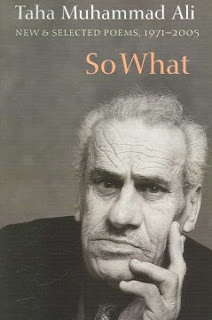 Thompson, M. (2009). The White War: Life and Death on the Italian Front, 1915-1919. New York: Perseus Books Group.
Thompson, M. (2009). The White War: Life and Death on the Italian Front, 1915-1919. New York: Perseus Books Group.The blurb on the inside of the jacket includes this tidbit: To maintain discipline in the face of desperation and low morale, the Italian chief of general staff restored the Roman practice of decimation, executing random members of units that retreated or rebelled.
Decimation literally means destroying or killing a large part of the population (literally every tenth person as chosen by lot).
Booklist Reviews
Hundreds of thousands of men are fed into a meat grinder in futile charges against entrenched positions; opposing armies are forging a weird sense of camaraderie as they fraternize during lulls in the slaughter; and rows of rotting corpses are scattered over a bleak, pockmarked landscape. But this isn t the familiar western front in France. Rather, these stark images are part of a stunning and emotionally wrenching account of war between Austria and Italy over the disputed terrain they both claimed. Although the struggle was recounted in the writings of Ernest Hemingway, the Italian front was regarded as a sideshow by many European journalists as well as Allied war planners. Whatever the strategic value of the campaign, Thompson illustrates that this was a massive, epic struggle that may have cost a million lives. He crafts a narrative rich in detail and which does not shrink from describing the horrors of a war that began, on the Italian side, in a spasm of wild nationalistic fervor but quickly degenerated into resigned cynicism. This is a masterful and moving chronicle. Copyright 2009 Booklist Reviews.
Kirkus Reviews
Penetrating study of one of the forgotten fronts of the Great War.Italy went to war with the neighboring Austro-Hungarian Empire in 1915 for complex reasons, writes British historian Thompson (Forging War: The Media in Serbia, Croatia, Bosnia, and Hercegovina, 2003, etc.), not least of them the irredentist view that ethnic Italians belonged to a greater Italy. The Allies abetted this view, promising to render Tyrol, Trieste and the Dalmatian coast to Italy, as well as portions of the Greek islands, Turkey and Africa. Italy's politicians pitched an inadequately prepared and provisioned army against a tactically superior enemy, which held most of the high ground. The "white war" of Thompson's title refers to the snowy peaks along the alpine front, but also to the sheer limestone walls that gleamed white in summer and had to be scaled—the Western front, Thompson memorably notes, tilted 45 degrees. In any season, the front was terrible, and thousands of men died—in sheer percentages, at a higher rate of casualty than in much better-known battles in France and Belgium. A few future historical giants turn up in Thompson's pages, including Benito Mussolini, Gabriele d'Annunzio and Erwin Rommel, but mostly his informants are the forgotten soldiers of the forgotten war, one of whom recalled, "We kill each other like this, coldly, because whatever does not touch the sphere of our own life does not exist." Many of the ethnic groups in which those soldiers figured would reappear in the history of Europe, among them Bosnian Muslims, Serbs and Slovenes, "whose alleged pacifism would be a stock joke in Tito's Yugoslavia" but who drew rivers of Italian blood. Ironically, Italy never got its promised empire, though Mussolini would spend much effort and countless lives seeking it.A much-needed addition to the literature of World War I, which is undergoing substantial revision nearly a century after it was fought.Agent: Jason Cooper/Faber and Faber Copyright Kirkus 2009 Kirkus/BPI Communications. All rights reserved.
Publishers Weekly Reviews
Independent scholar Thompson (Forging War) is familiar with a burgeoning Italian literature on the Great War’s military aspects. He utilizes that material to construct and convey, better than any English-language account, the essence of three years of desperate struggle for the Isonzo River sector in northeastern Italy. Thompson distinguishes elegantly among the 12 battles for this nearly impassable ground, although the book is best understood as an extended essay on the causes, nature and purpose of Italy’s involvement. Thompson presents Italy’s war as a test of the vitalist spirit (best expressed in futurism) to demonstrate that the country was more than a middle-class illusion. In consequence, Thompson shows, strategic, diplomatic and political vacuums were too often filled with leaders’ rhetoric and mythology. Too many generals, like Luigi Cadorna and Luigi Capello, were case studies in arrogant incompetence. In that environment, the less ordinary soldiers knew about causes and purposes, the better. When they failed in their mission, the draconian responses included summary execution. Prisoners of war were treated as cowards. The war, says Thompson, stands as Italy’s first “collective national experience” and illustrates the poisonous nature of European nationalism. Photos, maps. (Apr.)
Inside of the book is a black and white photo of Unique Forms of Continuity in Space by
































